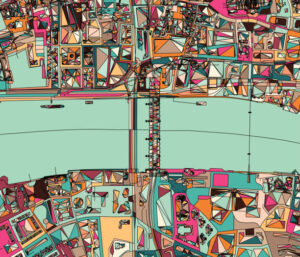In any industry, the pursuit of quality is paramount. Whether you’re a seasoned professional or a newcomer, understanding the critical factors that determine quality is essential for success. This article delves into the multifaceted aspects that professionals across diverse fields review to ascertain and uphold quality standards. By examining these key elements, you can refine your evaluation processes and contribute to the continuous improvement of your art industry.
Material Excellence
 (Photo from iStock)
(Photo from iStock)
One of the foundational pillars of quality assessment lies in the materials used. Regardless of the industry, the choice and quality of materials profoundly impact the final product or service. From manufacturing to service-oriented sectors, evaluating the composition, durability, and source of materials is crucial. This scrutiny ensures that the end result meets not only immediate standards but also possesses longevity and sustainability.
Craftsmanship and Workmanship
For industries involved in creating tangible products, the level of craftsmanship and workmanship is a defining factor. Precision, attention to detail, and skilful execution contribute to the overall quality of a product. This holds true for artisans crafting handmade goods, manufacturers operating heavy machinery, and service providers delivering meticulous work.
Compliance with Standards and Regulations
Adherence to industry-specific standards and regulations is a non-negotiable aspect of quality assurance. Professionals must review and ensure that their processes, products, or services comply with local, national, and international standards. This not only guarantees product safety and performance but also establishes credibility within the industry and among consumers.
Innovative Design and Functionality
In industries where design is a key component, assessing the innovative aspects and functionality of a product or service is vital. Whether it’s the user interface of software, the ergonomic design of a physical product, or the layout of a service-oriented space, a forward-thinking approach to design enhances the overall quality and customer experience.
Efficiency and Process Optimization
 (Photo from iStock)
(Photo from iStock)
Efficiency is a common denominator across industries. Professionals routinely review internal processes to identify areas for improvement, streamline workflows, and enhance productivity. This meticulous scrutiny not only contributes to cost-effectiveness but also ensures that the end product or service is delivered promptly without compromising quality.
Customer Satisfaction and Feedback Analysis
In customer-centric industries, feedback is a goldmine of information. Regularly reviewing customer satisfaction metrics and feedback allows professionals to gauge how well their products or services meet the needs and expectations of their target audience. This ongoing dialogue with customers is invaluable for making informed adjustments and fostering brand loyalty.
Employee Training and Competence
The competence of the workforce significantly influences quality. Industries need to regularly review employee training programs to ensure that staff members are equipped with the necessary skills and knowledge. Investing in professional development enhances the overall competency of the workforce, positively impacting the quality of the output.
Technological Integration and Upgrades
In today’s fast-paced technological landscape, staying current is imperative. Industries must regularly review and invest in technological upgrades to maintain competitiveness. Whether it’s adopting cutting-edge software, machinery, or tools, integrating the latest technology ensures efficiency, accuracy, and often opens doors to new possibilities.
Supply Chain Management
 (Photo from iStock)
(Photo from iStock)
For industries reliant on a complex network of suppliers, effective supply chain management is critical. Regular reviews of supplier performance, logistics, and inventory management contribute to the consistency and reliability of the raw materials or components entering the production process.
Environmental Sustainability
In an era focused on environmental responsibility, industries are increasingly reviewing their practices for sustainability. This includes assessing the environmental impact of production processes, waste management, and the overall ecological footprint. A commitment to sustainability not only aligns with global trends but also appeals to conscientious consumers.
Quality assessment is not a one-time endeavour but an ongoing commitment to improvement. Professionals must cultivate a culture of continuous review and adaptation to meet the ever-changing demands of their industries. Here are additional considerations that contribute to the comprehensive evaluation of quality.
Risk Management and Contingency Planning
A robust quality assessment includes a thorough evaluation of potential risks and the development of contingency plans. Professionals need to anticipate challenges in the production process, supply chain disruptions, or unforeseen market shifts. Implementing risk management strategies ensures resilience and the ability to maintain quality standards even in challenging circumstances.
Market Research and Consumer Trends
An awareness of market trends and consumer preferences is indispensable for maintaining relevance and competitiveness. Regularly reviewing market research data allows professionals to align their products or services with current demands. This proactive approach ensures that the quality of offerings resonates with the evolving tastes and expectations of the target audience of art industry.
Ethical Considerations and Social Responsibility
 (Photo from iStock)
(Photo from iStock)
In today’s socially conscious landscape, ethical considerations are integral to quality assessment. Professionals must review their practices to ensure ethical sourcing, fair labour practices, and a commitment to social responsibility. Consumers increasingly value businesses that align with their ethical principles, making ethical considerations a vital aspect of quality assurance.
Communication and Transparency
Transparency in communication is crucial for building trust with both internal and external stakeholders. Regularly reviewing communication strategies ensures that information is disseminated effectively, both within the organization and to the public. Clear and transparent communication fosters a positive perception of the business and its commitment to quality in art industry.
Competitor Analysis
Understanding the competitive landscape is a key component of quality assessment. Regularly reviewing the strategies and offerings of competitors provides valuable insights. This analysis allows professionals to identify areas where they can differentiate themselves, innovate, and maintain a competitive edge in terms of quality and market positioning.
Conclusion
In the intricate tapestry of industry, the determination of quality is a nuanced process involving the meticulous review of numerous factors. From the raw materials to the end-user experience, professionals in every field play a crucial role in upholding and elevating standards. As industries continue to evolve, so too must their approaches to quality assurance. By embracing a comprehensive understanding of these essential elements, professionals can navigate the dynamic landscape of their respective industries, ensuring that the pursuit of quality remains at the forefront of their endeavours.




